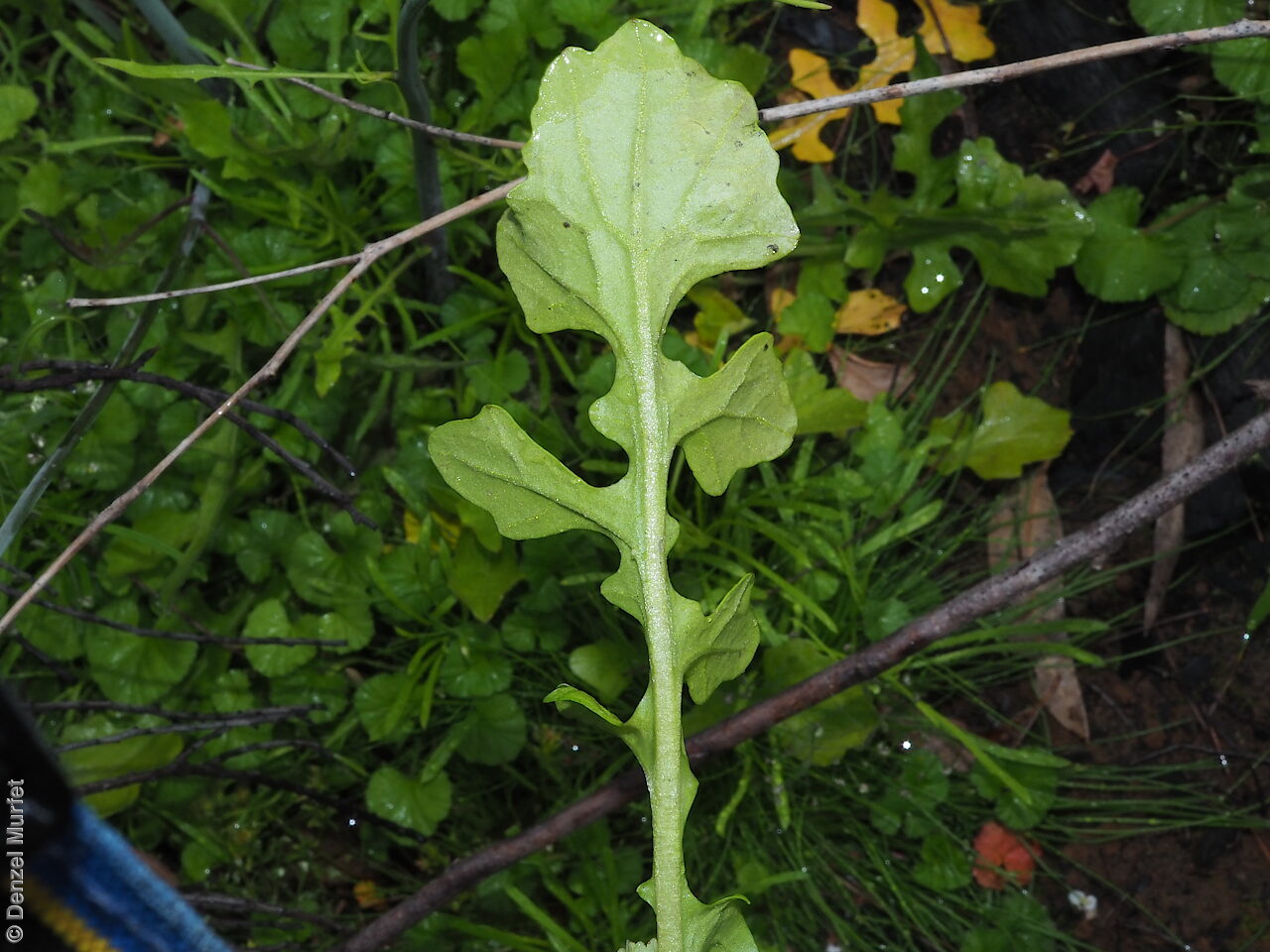



















Common names
Kangaroo Island Cress
Etymology
Irenepharsus from the Greek 'irene' meaning peace and 'pharsos' meaning a piece; referring to the resolution of a taxonomic problem. Phasmatodes from the Greek 'phasmatodes' meaning phantom-like, in allusion to the identification of the species.
Distribution and status
Endemic to South Australia and found only on the western end of Kangaroo Island, growing on laterite soil. Native. Rare in South Australia. More common post fire.
Herbarium region: Kangaroo Island
AVH map: SA distribution map (external link)
Plant description
Erect annual or biennial, sparingly branched herb to 90 cm tall, stems glabrous. Basal leaves rosette and pinnate, persisting. Stem leaves sparse, to 6 cm long, linear, entire. Flowers along a short spike with large white flower. Flowering between November and February. Fruits are brown cylindrical pod to 22 mm long and 1.5 mm wide. Seeds are dark brown reinform seed to 1.2 mm long and 0.7 mm wide, with small net-like surface. Seed embryo type is bent.
Seed collection and propagation
Collect seeds between November and March. Collect maturing pods those turning pale brown with hard seeds inside. Be gentle with the pods as they split open easily. Place the pods in a tray and cover with paper to prevent seeds from popping out and leave to dry for a week. Then rub the dried pods gently by hand to dislodge the seeds. Use a sieve to separate the unwanted material. Store the seeds with a desiccant such as dried silica beads or dry rice, in an air tight container in a cool and dry place. Seed viability is usually high for the species if collected at maturity. This species has physiological dormancy that need to be overcome for the seed to germinate.
Fire response
Obligate re-seeder.
Longevity: >2 years
Time to flowering: 1 year
Recovery work
In 2020-2021 this species was assessed post-fire in 1 year old fire scars. A total of 252,700 seeds have been collected & banked for 2 populations in Flinders Chase National Park. Germination screening testing the response to fire cues will be undertaken in 2021.This project was supported by the Project Phoenix program.
| Location | No. of seeds (weight grams) | Number of plants | Date collected | Collection number Collection location | Date stored | % Viability | Storage temperature |
|---|---|---|---|---|---|---|---|
| BGA MSB | 7,700 (1.48 g) 6,800 (1.3 g) | 100+ | 11-Nov-2008 | TST571 Kangaroo Island | 20-Jul-2009 | 85% | -18°C |
| BGA | 8,000 (1.55 g) | 25+ | 15-Dec-2008 | MJT218 Kangaroo Island | 20-Jul-2009 | 100% | +5°C, -18°C |
| BGA | 470 (0.088 g) | 4 | 11-Jan-2021 | DJD3981 Kangaroo Island | 28-Jun-2021 | 90% | -18°C |
| BGA | 252,300 (39.970 g) | 100+ | 12-Dec-2020 | DJD3906 Kangaroo Island | 7-Jul-2022 | 95% | -18°C, -80°C |
Number of plants: This is the number of plants from which the seeds were collected.
Collection location: The Herbarium of South Australia's region name.
% Viability: Percentage of filled healthy seeds determined by a cut test or x-ray.